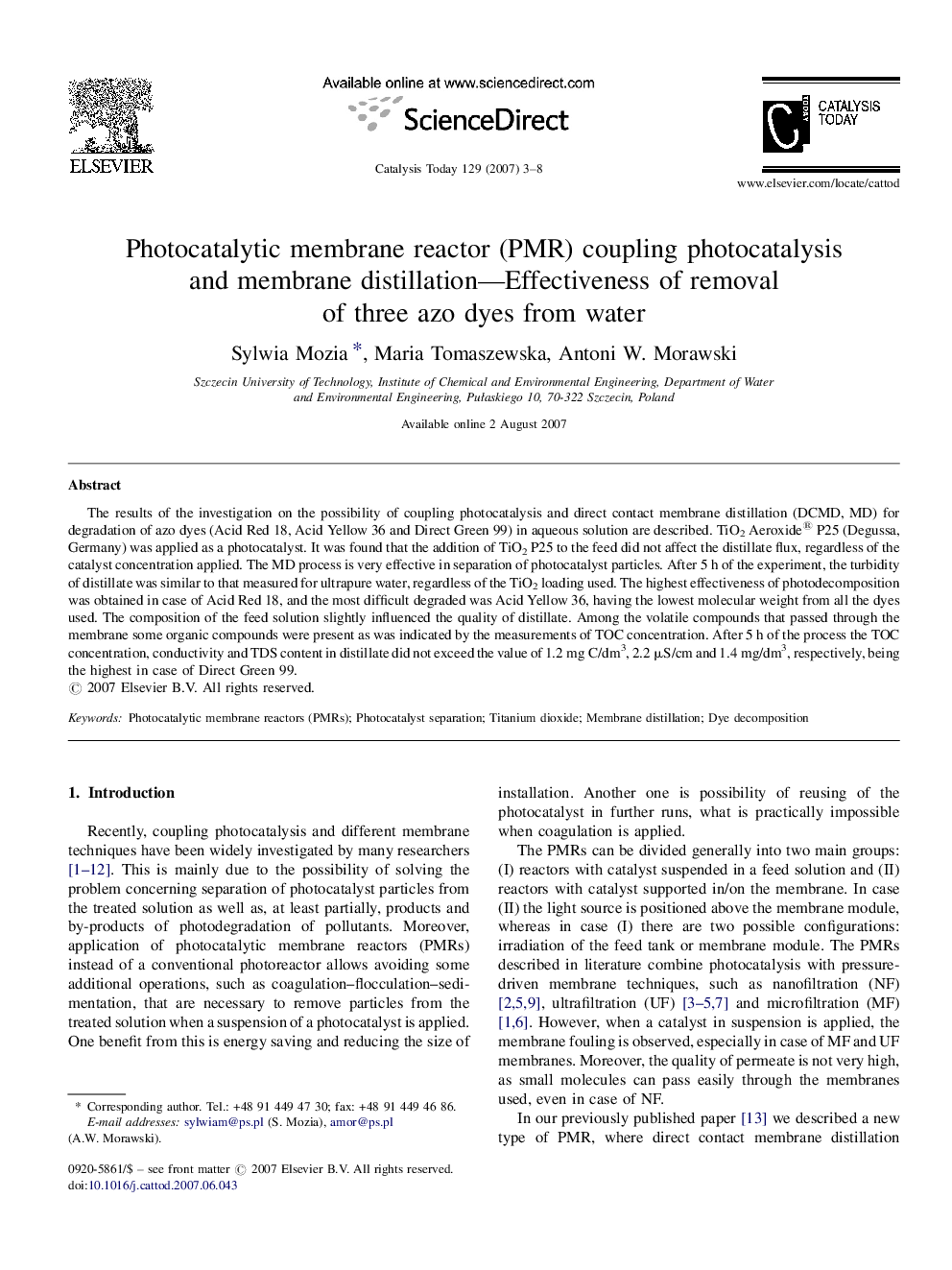| Article ID | Journal | Published Year | Pages | File Type |
|---|---|---|---|---|
| 57734 | Catalysis Today | 2007 | 6 Pages |
The results of the investigation on the possibility of coupling photocatalysis and direct contact membrane distillation (DCMD, MD) for degradation of azo dyes (Acid Red 18, Acid Yellow 36 and Direct Green 99) in aqueous solution are described. TiO2 Aeroxide® P25 (Degussa, Germany) was applied as a photocatalyst. It was found that the addition of TiO2 P25 to the feed did not affect the distillate flux, regardless of the catalyst concentration applied. The MD process is very effective in separation of photocatalyst particles. After 5 h of the experiment, the turbidity of distillate was similar to that measured for ultrapure water, regardless of the TiO2 loading used. The highest effectiveness of photodecomposition was obtained in case of Acid Red 18, and the most difficult degraded was Acid Yellow 36, having the lowest molecular weight from all the dyes used. The composition of the feed solution slightly influenced the quality of distillate. Among the volatile compounds that passed through the membrane some organic compounds were present as was indicated by the measurements of TOC concentration. After 5 h of the process the TOC concentration, conductivity and TDS content in distillate did not exceed the value of 1.2 mg C/dm3, 2.2 μS/cm and 1.4 mg/dm3, respectively, being the highest in case of Direct Green 99.
